
Early Miramichi Ice Out and Scottish Springers
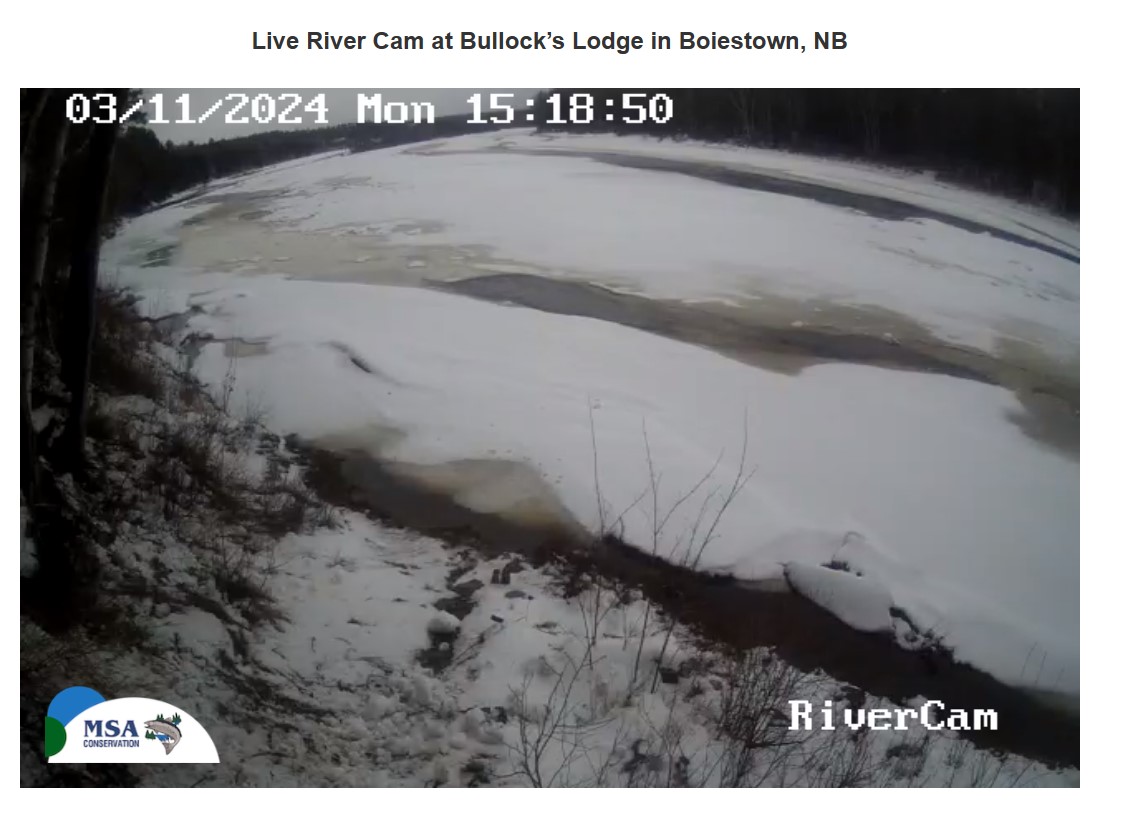
This is how things should look a month from now. Note the open leads and deteriorating ice condition.
Fishing Friends – Every winter in salmon country, and its eventual transformation to springtime and ice-out is a little unique. Most recent years have been marked by a tug of war between milder, rainy conditions, and the fierce cold and snow we normally associate with Canadian winters. This year definitely trended to milder, and periods of the -20C and below temps that build the kind of river ice you can drive trucks on were almost completely missing. Now on the 11th of March we don’t need to talk about ice-out, it has already happened in many places on the river. If you look at the last week’s graph of Miramichi water heights you can see the large, rapid ups and downs in height that always accompany the breaking of the river’s ice in the Blackville area. There is no real possibility of refreezing now, and a clear river, free of ice for the start of spring salmon fishing on April 15 is assured.

Spring salmon fishing has been a staple of Miramichi and Cains River fishing since the turn of the 20th century.
2024 is the earliest ice out that I have ever seen, and while it is not assured I also expect that most of the snow will be melted and run off long before fishing begins. That show I have seen before. It would likely mean that spring water heights are lower than normal, and it may mean that the kelts head out to the ocean earlier than in more normal ice out years. The best advice I can give you is to stay in close touch with the management of the lodge where you are planning your spring fishing trip. These people live on the river and see it every day. They also have a great deal of experience dealing with these things.
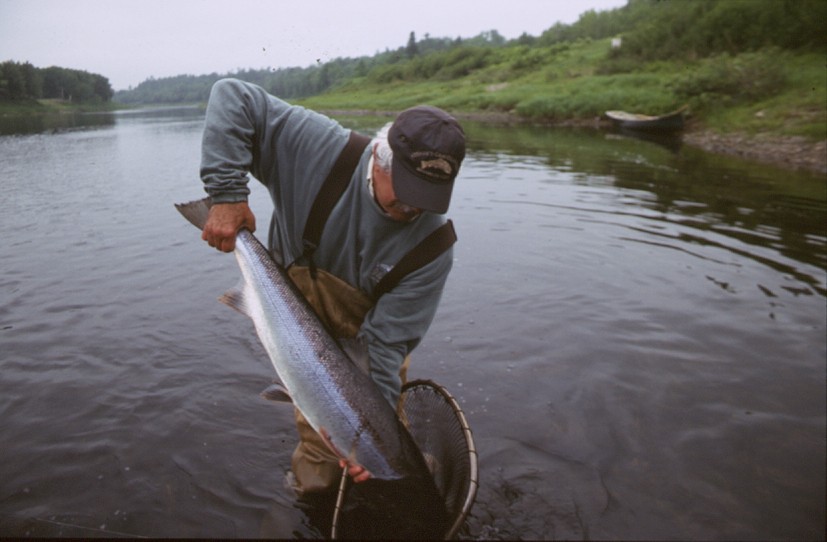 What does an early ice out mean for the summer run of bright salmon? I don’t think much, or at least not that can be easily forecast. Once the spring freshet dies off, which really only takes a couple of weeks, it is down to how much rain we get, and rain seems very hard to predict any distance in advance. This 48″ salmon was released in Campbell’s Pool on June 14, 2004. The water height then was about .8 meters on the Blackville gauge, unusually low for June, but fishing was really good!
What does an early ice out mean for the summer run of bright salmon? I don’t think much, or at least not that can be easily forecast. Once the spring freshet dies off, which really only takes a couple of weeks, it is down to how much rain we get, and rain seems very hard to predict any distance in advance. This 48″ salmon was released in Campbell’s Pool on June 14, 2004. The water height then was about .8 meters on the Blackville gauge, unusually low for June, but fishing was really good!
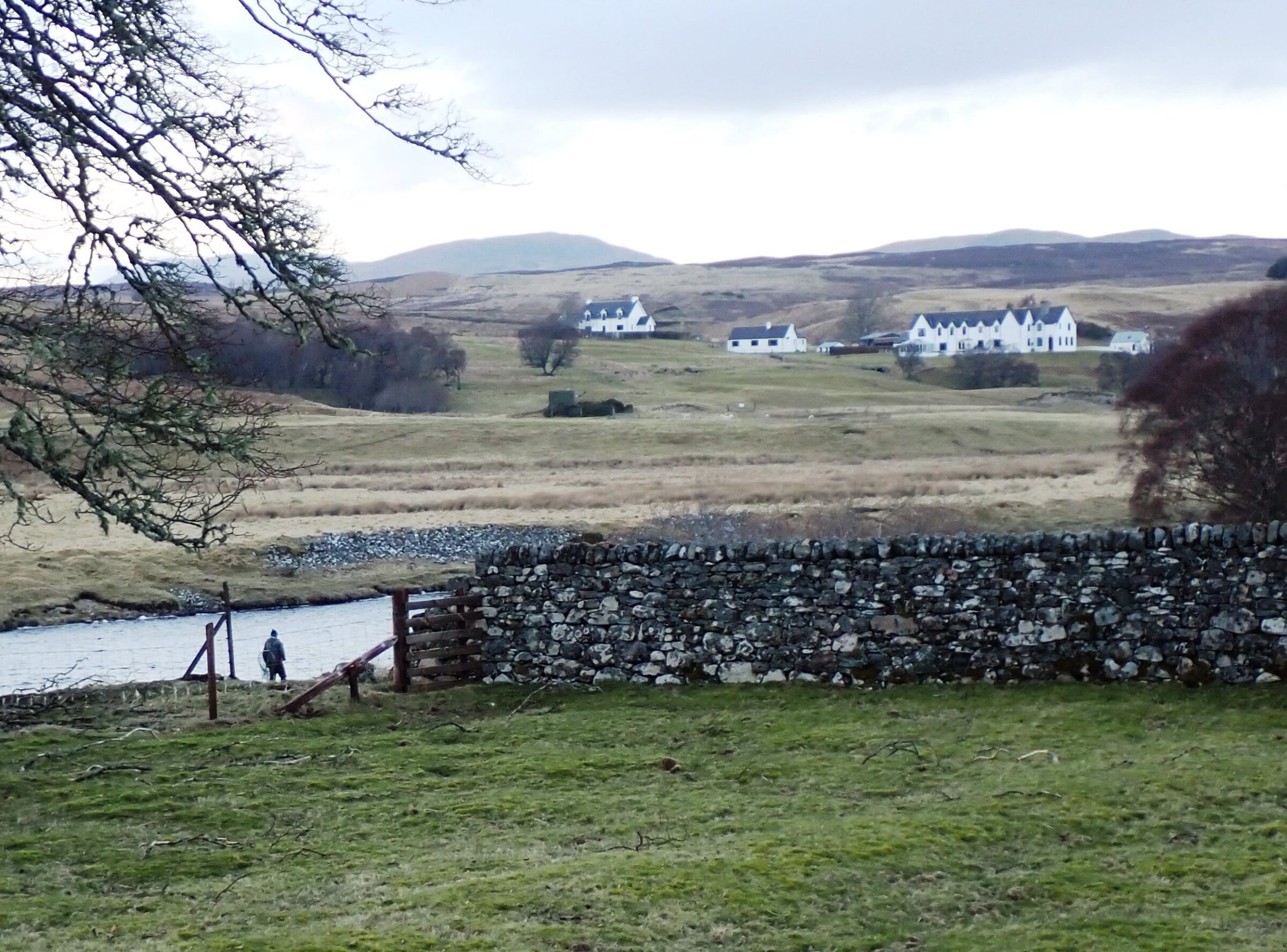
An angler fishing Lower Dalvina Bridge Pool on the River Naver, the lodge at Syre Estate in the background. Note the greening grass.
I just returned from a week fishing the River Naver, set right in the middle of the North Coast of Scotland. While I was there, I was in touch with a number of people who are familiar with the early runs of Scottish springer salmon in many of the major rivers. The general word is that the runs are down, in some cases very significantly. Perhaps the most shocking statistic that I have heard in quite a while regarding salmon is from the River Dee, historically one of Scotland’s big four salmon rivers the others being the Tweed, Tay and the Spey. Starting at Banchory and going seaward – a big stretch of river that contains usually prolific beats such at Park and Crathies/West Durris, not one single springer has been caught as of March 11. Incredible, and very sad. A quick check of all the rivers showed that so far this year catches at all beats are well below average. There has been a definite trend in many Scottish rivers towards declining early runs, heavier late summer runs – July and August – and lighter fall runs. I don’t think anyone has any real idea as to why this is the case.
As we have harped on in these blogs in recent years, the rivers with strong hatchery programs are holding up the best. The greatest problem is that the percentage of smolts that leave the rivers and make it back as adults has decreased markedly in the last decade and a half. This is creating a lot of unused spawning and nursery habitat. More fry stocked in the rivers – which are almost all well below their natural carrying capacity – means more smolts out and more adults back. The cult of “wild and natural only” fishery biologists want to brand all salmon stocking as if every program was poorly designed and run, with pellet fed summer parr, spawned from recycled broodstock, being thrown thoughtlessly into rivers achieving no more than feeding the mergansers. It simply isn’t true.
A good case in point is the Dee that we spoke of in the last blog. The Dee owners had engaged in stocking since the late 1800s. In 2006 the powers to be became convinced that since fishing catches had been good – and in fact as you can see by the graph they had – that they could stop all stocking. In a nutshell, returns have declined by at least 75% since that time. Now the Dee is entering into a new era where they will be stocking not only salmon fry, but also will be capturing kelts and raising them in the hatchery to release the next fall for natural spawning. The best scientists that I know on the Miramichi have looked at that program, and given our relatively high survival rate of kelts to return as natural repeat spawners, have decided that the kelt part is currently not a program we should undertake.
What the Miramichi does still have is a lot of smolts – currently feeding our bloated striper population. We can grow some of those wild smolts in our hatchery to become virgin broodstock. We can fertilize the hens with not only hatchery raised grilse – so we can feed them for one year and not two – and we can capture precocious wild parr from the river and use them for part of the male spawning component. All we need is for DFO to get on the bandwagon and help out rather than stand in the way. Okay, rant over for now…
While even in the best recent years the early March catch of springers is never high, each of the fish caught is a real prize for the lucky angler. This past week on the Naver twelve rods – two for each of 6 beats – caught a grand total of four springers. Ten would have been an excellent number. This was up from the previous week’s total of two. Meanwhile the neighboring Helmsdale caught just one, but what a cracking seventeen pounder it was. I was the lucky angler for one of these fish. There is a pool on the Naver called the boat pool. It is so-named because if you peered down from 500 feet in the air the river would look like a Viking longboat, with the river on one end curving into a long straight chute, and curving back out at the other making a bow and stern. My estimated 11 pound springer took a long, slinky orange tube fly just as the pool broadens out at the downstream end. I was daydreaming, and suddenly I was on. That is probably the best way not to screw up a good take.
Collin Somerville, one of the Scottish men I have been fishing with on the Naver for the last ten years or so, caught another one far up on the river at the top of beat one on a Dee Monkey fly. My fish was on beat three on Tuesday, none were caught on Wednesday, and on Thursday two were caught on beat two – upriver – and on Friday Somerville caught his on beat one. There had been a decent raise of water into Monday morning, and it seems likely that it brought in a little pulse of fish that we hooked a few of as they made their way through the system. Just above where Collin caught his fish the river begins with its outflow from massive Loch Naver where a good many of the Naver fish hold up until the spawning urge comes in the fall.
Ralph Vitale and I will be fishing on the nearby Helmsdale the first week of April. This is the river where Michael Wigan, our guest speaker at this past February’s MSA US dinner, owns Borrobol Estate which has one of the Helmsdale’s beats. There are six beats and every angler there for the week gets to fish each one. I’m very much looking forward to a chance at another one of these great fish. Normally speaking we can expect to see more fish in early April then in March, so we’ll be ready to make the most of whatever opportunities come our way.
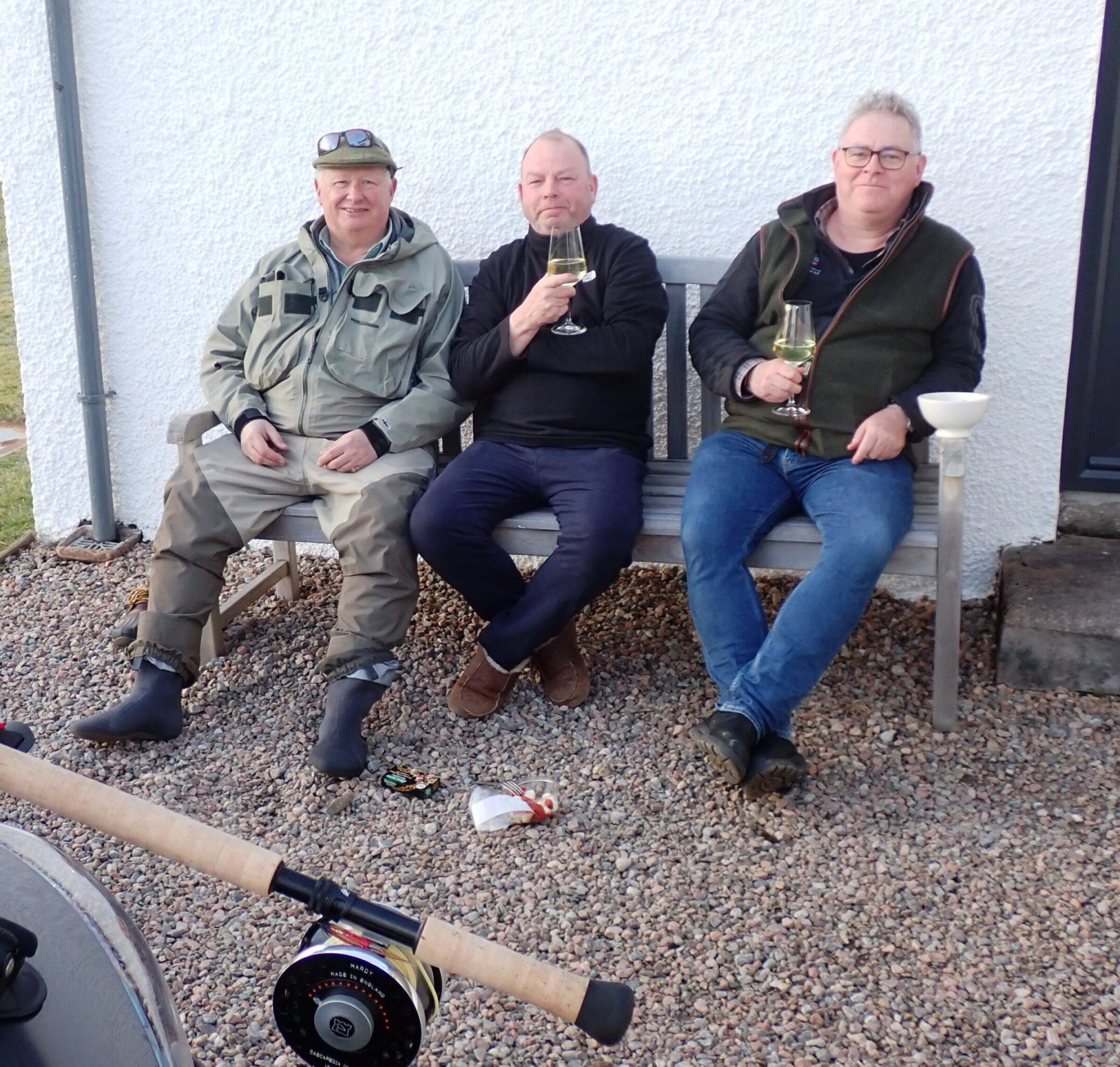
Three of my Scottish salmon fishing pals: Charlie, Ron and Dougle enjoying a glass of wine after a day’s fishing.
I’ve been waiting until now to voice this complaint, but here goes. I see that on January 8th I sent my letter to: The Honourable Diane Lebouthillier, P.C., M.P. Minister of Fisheries, Oceans and the Canadian Coast Guard. I know that a fairly large number of my blog subscribers also wrote to her. Many sent me copies of their letters. Has anyone heard back? At least last year Joyce Murray, then the Minister, did require DFO in Moncton to send out a reply. It took about 45 days, but at least we got one. It has now been 60 days and I have had no response. It really is appalling. I have heard that between our campaign and that of the ASF/MSA – I wrote one in that program too and also have had no reply – that close to 1,000 letters were received. I also heard that it caused quite a stir. I hope so. Right now a group headed up by the Miramichi Salmon Association and the New Brunswick Salmon Council are trying to convince DFO of the importance of supporting MSA hatchery programs. Let us hope that all of our efforts will help to move the needle.
Thanks for reading. Brad Burns


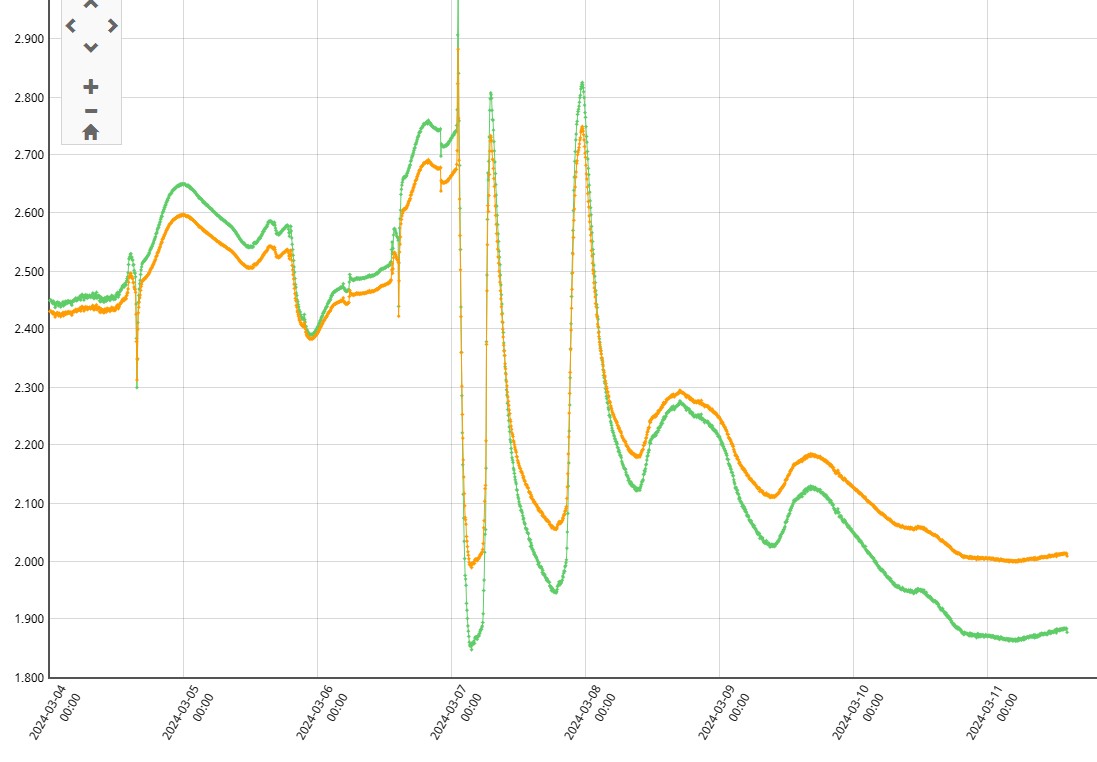
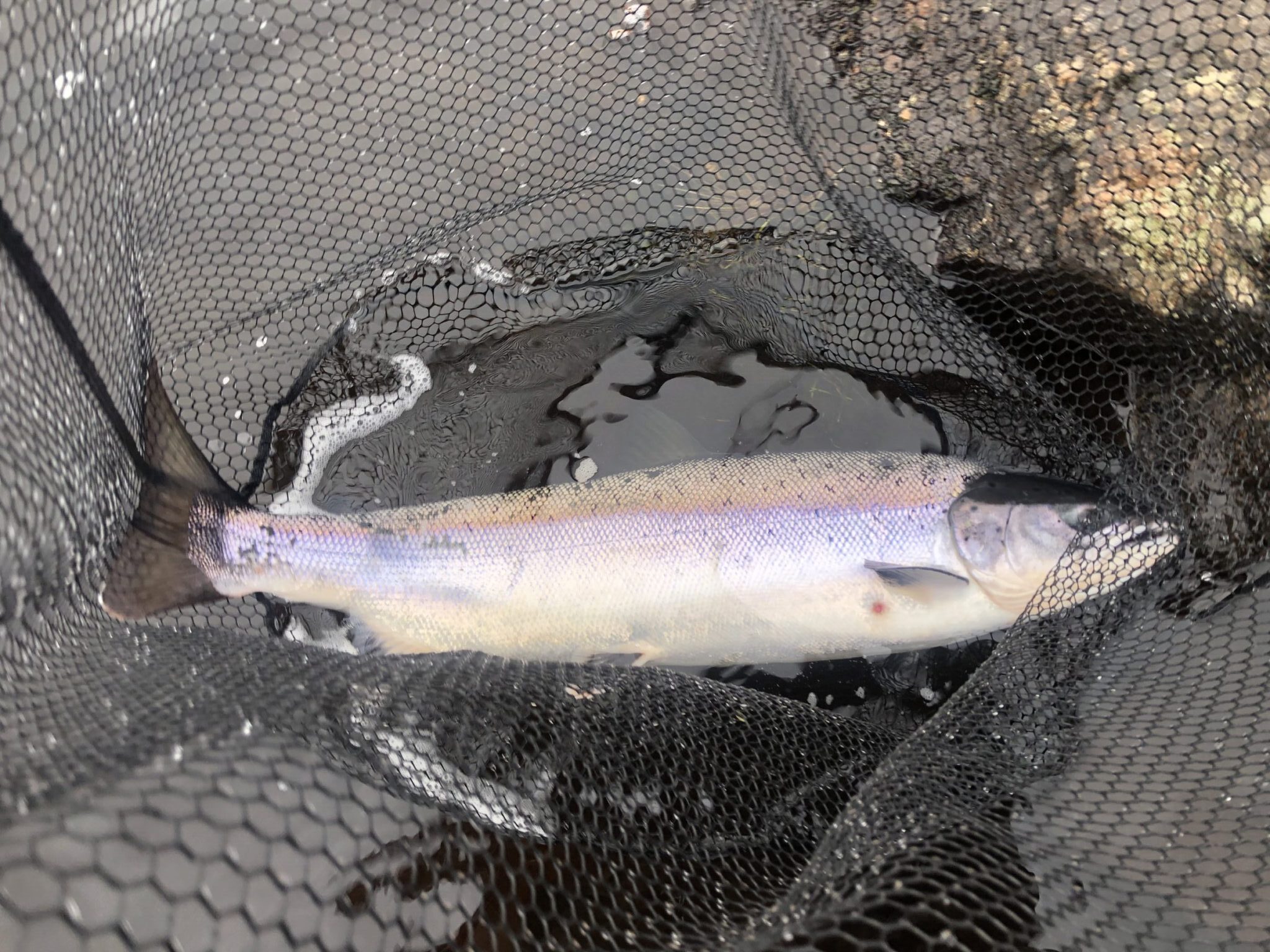
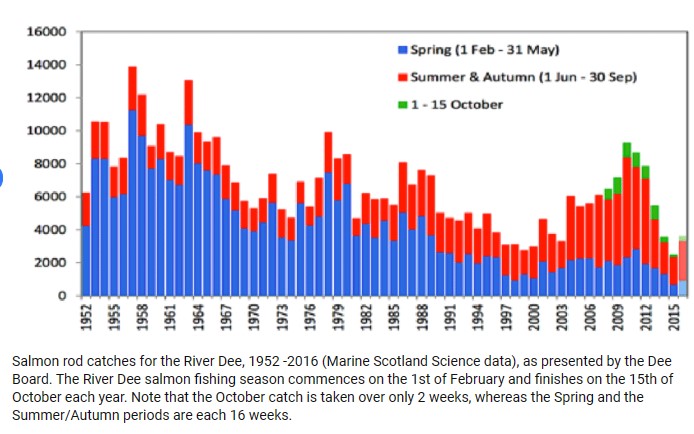
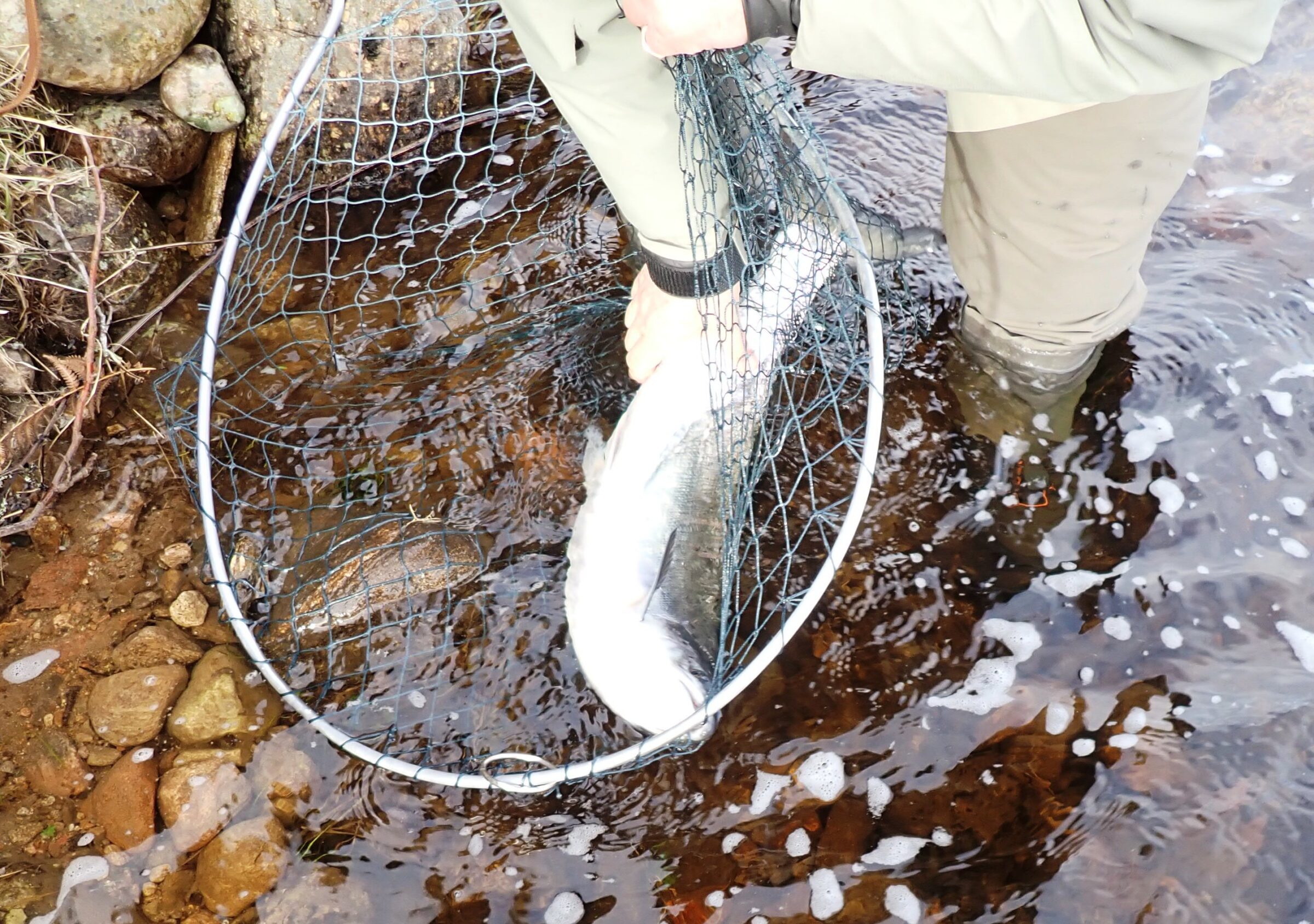
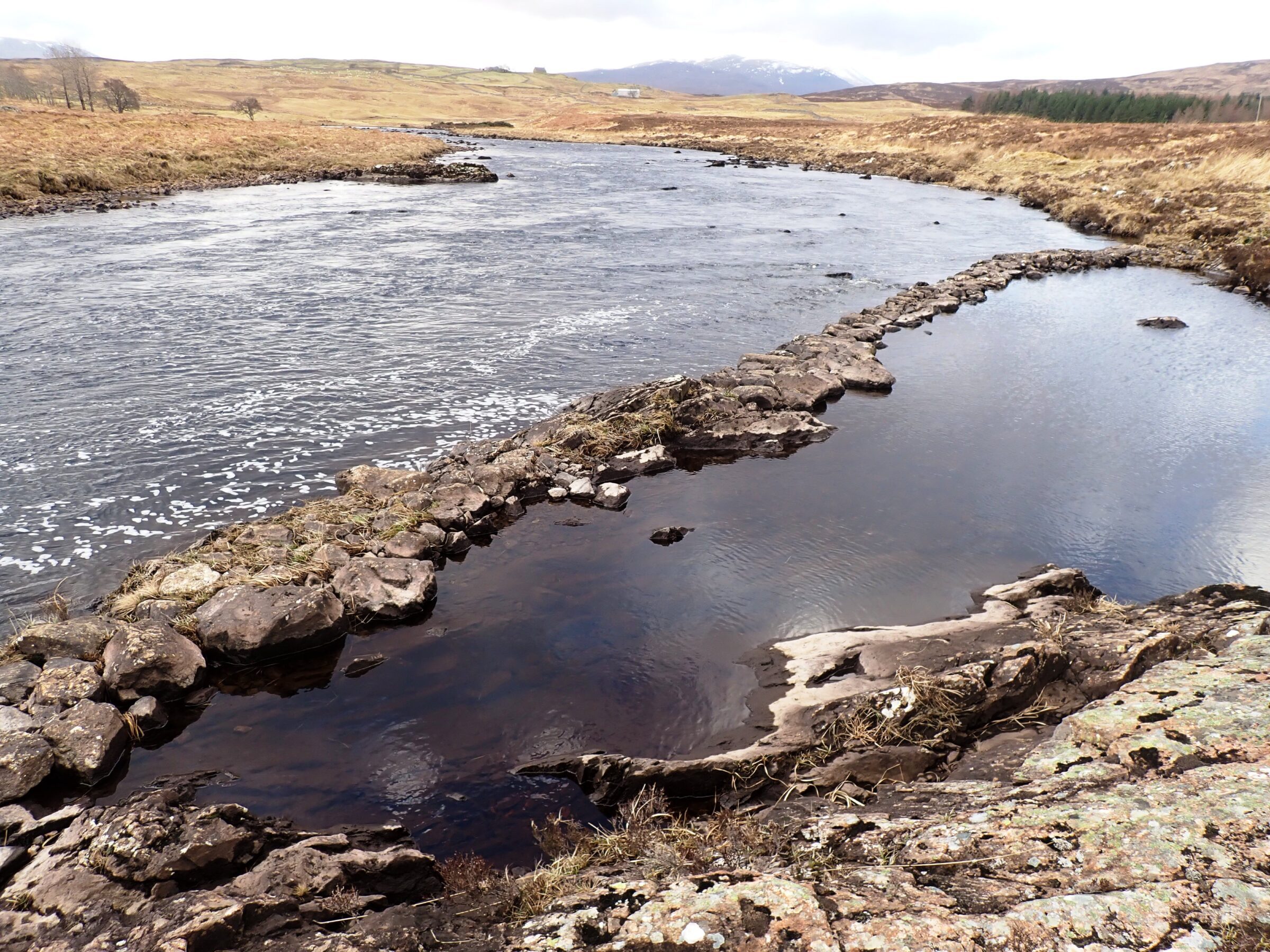
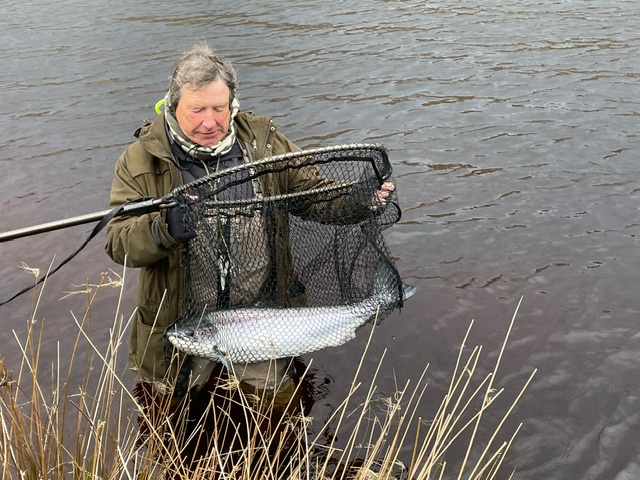
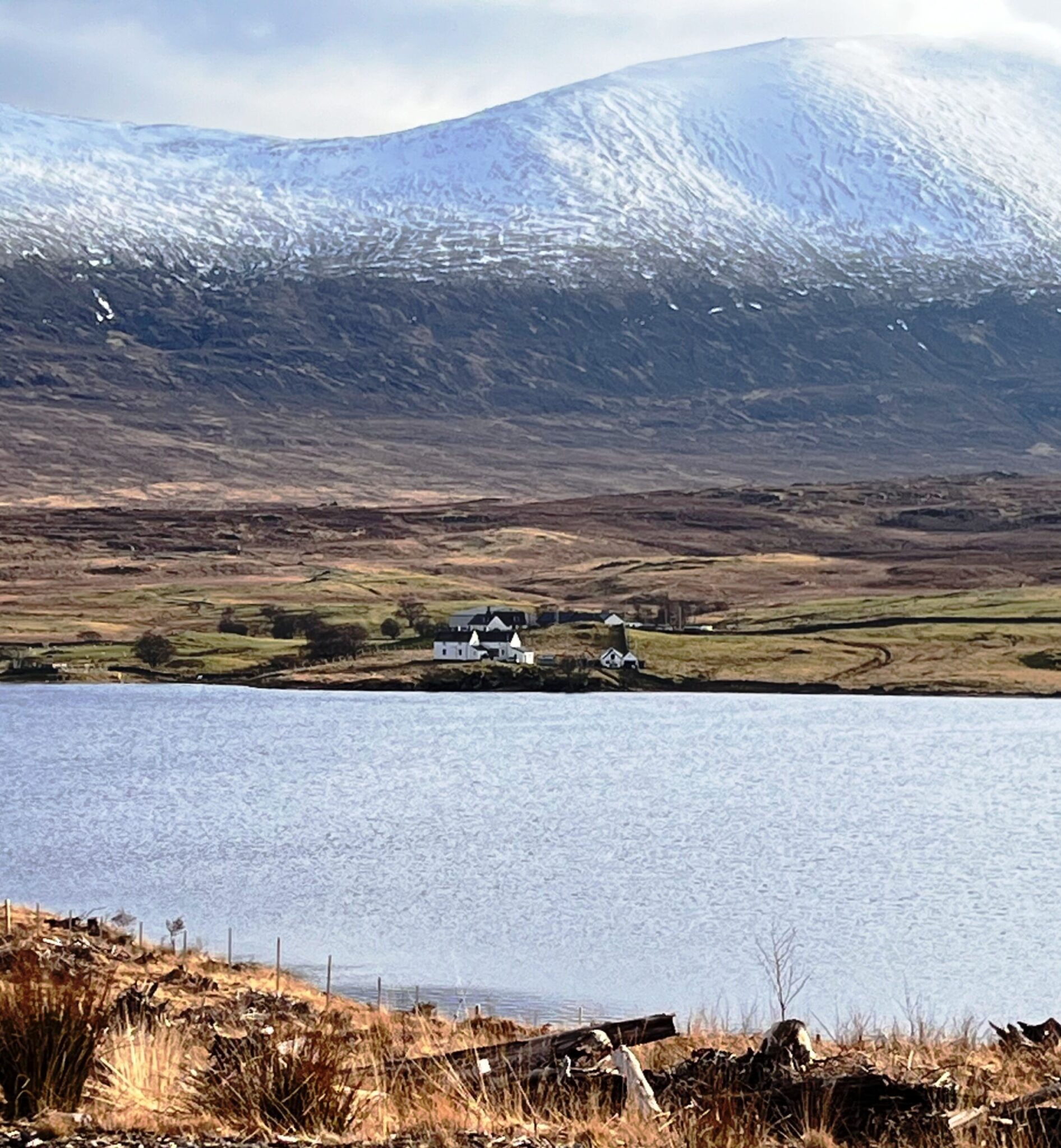
Disappointing report about the Scottish rivers. And there are no Striped Bass over there, right?
There are no striped bass. Thank god for that or they would be totally out of business.
I have sent my letter again which was originally date 9th January 2024
Thanks Anthony. It is hard to believe that a public official could ignore such a letter.
Sorry about the news on the River Dee. Might it pick up yet? And loved the pictures, especially the Lower Dalvina Bridge on the River Naver.
Thanks, Brad,
Dolly
Great to hear from you Dolly. I love that scenery too. That white house right at Dalvina Bridge is where we stay.
I’m sure there will be more fish along later in the summer. That has been the trend. The total season run, though, is definitely down. Brad
So glad you got one Brad..
Nice report. Admirable early season tenacity. I’ve never really had it for spring fishing at any rate. Maybe I’ll get a chance in 2025.
Tight lines Helmsdale with ‘the chief laird.’
Thanks Henry.
Great to meet up again on the Naver Brad. Better conditions this year compared to -18C last year. Delighted that the tail end guys managed a Springer too. Ghillie Craig will be delighted it was Sommy that caught it! Look forward to next time. Cheers Ron
Hi Ron. It was great fun spending time with you, Douglas and Charlie. Collin had a god chat with Craig, and I think everything is good.
As always, insightful and engaging, well said Brad!
That’s good news. Well done Sommy and Craig!